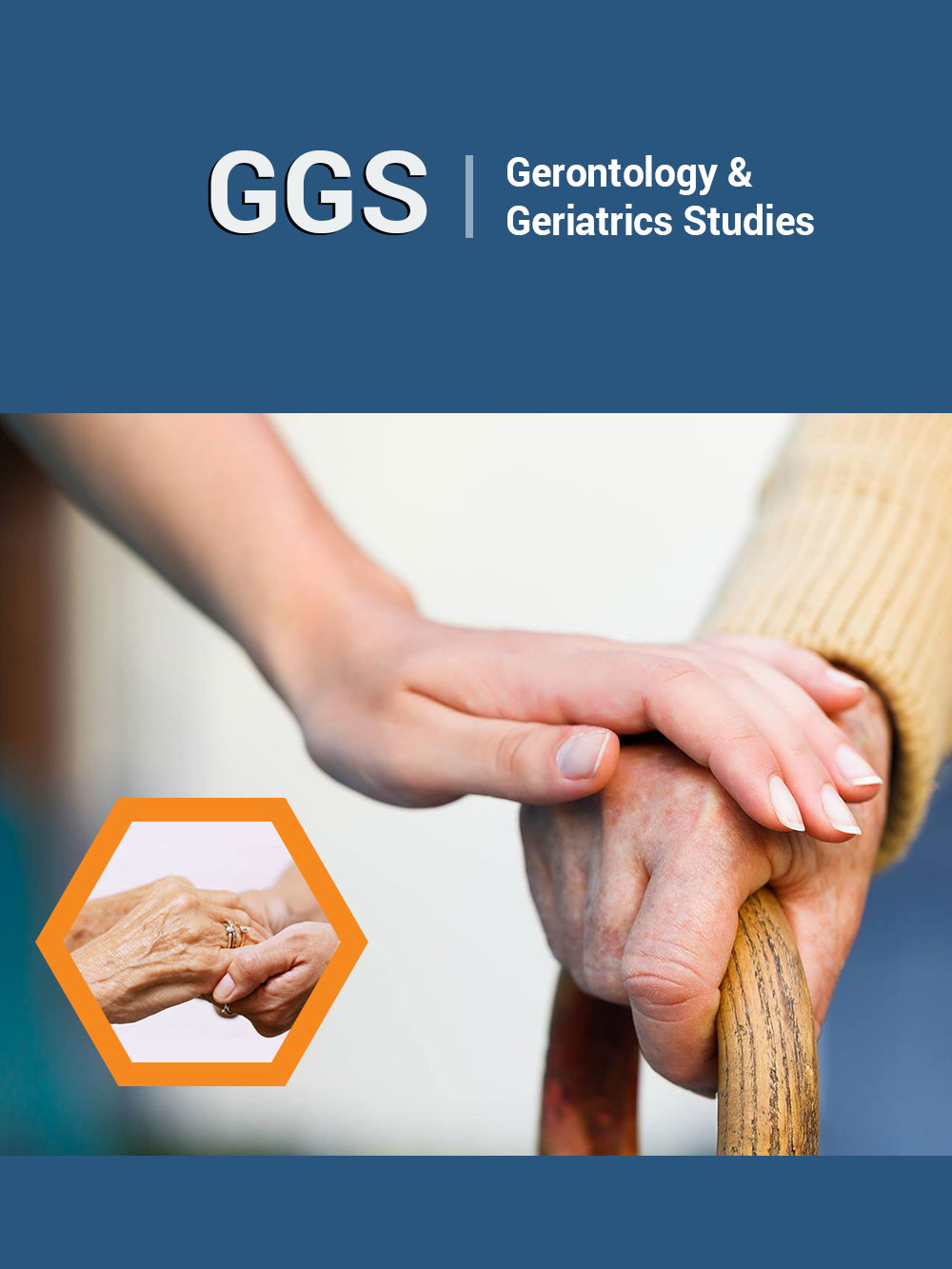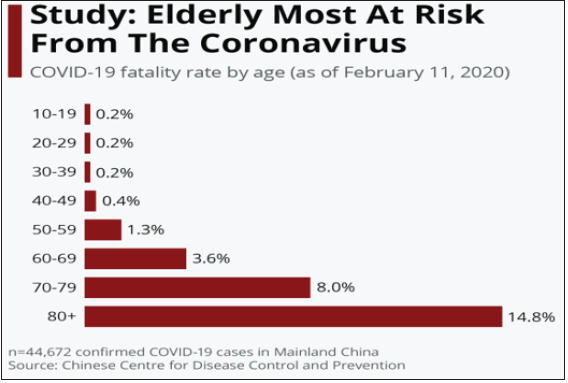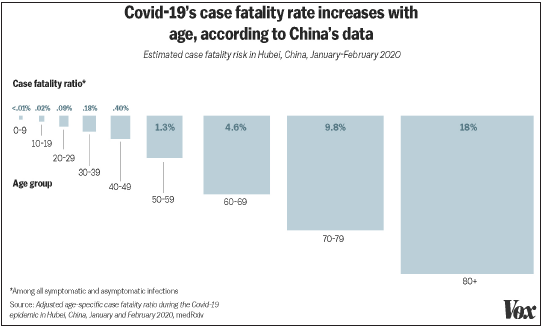- Submissions

Full Text
Gerontology & Geriatrics Studies
Vulnerability and Assessment of Needs of Older People in the Midst of COVID-19 Pandemic: A Mini Review
Abdulraheem IS1* and Abdulraheem KS2
1Department of Epidemiology & Community Health, College Health Sciences, University of Ilorin, Nigeria
2Department of Community Health, College of Medicine, University of Lagos, Nigeria
*Corresponding author: Abdulraheem IS, Department of Epidemiology & Community Health, College Health Sciences, University of Ilorin, Nigeria
Submission: April 21, 2020;Published: February 17, 2021

ISSN 2578-0093Volume6 Issue5
Mini Review
As the coronavirus spreads across the globe, it’s becoming more apparent that older people with underlying health conditions are being hit hardest by the illness it causes. The coronavirus that became a global pandemic before mid-March 2020, like the ones responsible for SARS and MERS, affects the part of the lungs where gas exchange-the delivery of oxygen to the bloodstream and the removal of carbon dioxide-takes place. “As one gets older, the lungs are not as elastic or as resilient as when one is younger. This condition together with any underlying health issues increased the loss of airway and respiratory functions. New coronavirus populations are generally susceptible, but elderly people with underlying diseases are more susceptible. The underlying diseases are diabetes, hypertension, cardiovascular disease, and cerebro-vascular disease [1]. The elderly is more susceptible to severe illness with the tendency to be admitted to the intensive care unit (ICU) with a high mortality [2]. A study of 1099 patients with confirmed new type of coronavirus pneumonia found that 15.1% of the population is 60 years old and above, while 27.0% are severely aged [3]. In COVID-19, the mortality rate of patients aged 60 years and over is 5.3% which is significantly higher than that of patients under 60 years (1.4%) [4].
Figure 1:Elderly Most at Rsniisk from the Coronavirus.

The COVID-19 pandemic is impacting the global population in drastic ways. In many countries, older people are facing the most threats and challenges at this time. Although all age groups are at risk of contracting COVID-19, but older people face significant risk of developing severe illness if they contract the disease due to physiological changes that come with ageing, decreased immune function and potential underlying health conditions or multimorbidity which expose older adults to be more susceptible to the infection itself and make them more likely to suffer severely from COVID-19 disease and more serious complications (Figure 1). Reports from Europe are showing that over 95% of COVID-19 related deaths occurred in those older than 60 years. More than 50% of all deaths were people aged 80 years or older and that 8 out of 10 deaths are occurring in individuals with at least one underlying co-morbidity, in particular those with cardiovascular diseases/hypertension and diabetes, but also with a range of other chronic underlying conditions [5]. According to World Health Organization the case fatality rate of COVID-19 in people who reported no chronic diseases was 1.4 percent, but it shot up in groups with these conditions: “13.2% for those with cardiovascular disease, 9.2% for diabetes, 8.4% for hypertension, 8.0% for chronic respiratory disease, and 7.6% for cancer [6].
Figure 2:Covid-19 case fatality rate by age.

The Needs:
A. Provision of adequate supplies of food and prescription
medications in case they need to stay home. Obtain at least a
30-day supply of prescription drug (Figure 2).
B. Stock up on tissues and over-the-counter medicines to treat
fever, cough and other symptoms should they arise.
C. Have enough groceries and household items to be comfortable
staying home for a few weeks.
D. Make a backup plan for caregiver in case he or she falls sick.
E. Practice daily preventive measures such hand washing,
cleaning of home to remove germs.
F. Pay attention to the local news and follow the advice of local
health officials.
G. Stay in touch with others by phone, email and video chats.
H. Avoid visiting sick people and know when to get medical help
if ill.
I. Older people should stay at home for an extended period
of time in self-isolation (otherwise called “shielding”), in
particular those who are immune-compromised or have
chronic conditions.
J. Secure care plans, defined pathways for accessing services for
elderly.
K. Monitor surveillance of their compliance with prescribed
medicines, supplies and equipment; transportation and
support for self-management, access to rehabilitation and
palliative care, as needed.
L. Always stay connected with older people. The younger ones
should keep daily contact with old people.
M. Show them how to video chat with others using smart-phones,
laptops or tablets.
N. Encourage friends and family outside to telephone, write notes
or send cards to lift their spirit.
O. Avoid travel. Older adults should put off non-essential travel,
particularly cruises or trips with itineraries that would expose
them to crowds.
P. Postpone unnecessary doctor visits. If an older adult in your
care is feeling well, consider helping them to postpone elective
procedures, annual checkups and other non-essential doctor
visits.
Q. Give special attention to those who provide nursing and social
care services for older people.
R. Encourage elderly to practice healthy habits.
a) Cover coughs and sneezes with a tissue or the inside of your
elbow, then wash your hands.
b) Avoid touching your eyes, nose and mouth with unwashed
hands.
c) Clean your hands often. Wash your hands with soap and water
for 20 seconds.
d) If you don’t have soap and water, use an alcohol-based hand
sanitizer with at least 60 percent alcohol.
Clean-and then disinfect-surfaces and things you touch often. These include tables, chairs, doorknobs, light switches, elevator buttons, handrails, countertops, remote controls, shared electronic equipment, shared exercise equipment, handles, desks, phones, keyboards, toilets, faucets and sinks.
References
- Li JY, You Z (2020) The epidemic of 2019-novel-coronavirus (2019-nCoV) pneumonia and insights for emerging infectious diseases in the future. Microbes Infect 22(2): 80-85.
- Guan WJ, Ni ZY, Zhong NS, Yuen, Shan, et al. (2020) Clinical characteristics of 2019 novel coronavirus infection in China. Med Rxiv.
- Yang Y, Lu QB, Liu MJ, Yi XW, Zang AR, et al. (2020) Epidemiological and clinical features of the 2019 novel coronavirus outbreak in China. Med Rxiv.
- Liu Y, Gayle AA, Smith AW (2020) The reproductive number of COVID-19 is higher compared to SARS coronavirus. J Travel Med 27(2).
- Henri PKH (2020) Older people are at highest risk from COVID-19, but all must act to prevent community spread.
- https://www.who.int/docs/default-source/coronaviruse/who-china-joint-mission-on-covid-19-final-report.pdf
© 2021 Abdulraheem IS. This is an open access article distributed under the terms of the Creative Commons Attribution License , which permits unrestricted use, distribution, and build upon your work non-commercially.
 a Creative Commons Attribution 4.0 International License. Based on a work at www.crimsonpublishers.com.
Best viewed in
a Creative Commons Attribution 4.0 International License. Based on a work at www.crimsonpublishers.com.
Best viewed in 







.jpg)






























 Editorial Board Registrations
Editorial Board Registrations Submit your Article
Submit your Article Refer a Friend
Refer a Friend Advertise With Us
Advertise With Us
.jpg)






.jpg)














.bmp)
.jpg)
.png)
.jpg)










.jpg)






.png)

.png)



.png)






